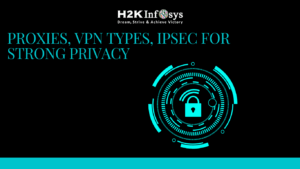Since data is often an organisation’s most important asset, its protection is crucial. Information security, or InfoSec, is the discipline of safeguarding data from various possible risks. This covers physical and cyber threats as well as interruptions from things like internet outages and natural disasters. Information and communication security (InfoSec) encompasses various domains, such as cybersecurity, infrastructure security, and application security (AppSec). It also includes measures like physical defences and access controls. Check out the online cyber security training to learn more about Information Security.
Three Principles of Information Security
The three information security principles, or the objectives that an information security solution may be created to accomplish, are referred to as the “CIA Triad.”
- Confidentiality: Maintaining information’s confidentiality means keeping it hidden from prying eyes or possible exposure. Confidentiality is protected by methods like access limits and encryption.
- Integrity: Integrity is the quality of making sure that illegal data updates cannot be carried out covertly. Digital signatures, checksums, and hashes are a few examples of techniques used to guarantee information integrity.
- Availability: Availability quantifies the degree to which authorised users can access systems or data. Availability is guaranteed by techniques like load balancing and backups.
Types of Information Security
The field of information security is very expansive. The following are a few of the primary categories of information security:
- Application Security: A vast array of potentially sensitive data is processed and stored by applications, both on-premises and SaaS. Protecting sensitive data within an organisation requires securing these applications from potential exploitation.
- Cloud security: Businesses are using cloud infrastructure more and more to host and store apps and data. Due to the intricacy of managing cloud configurations, the size of cloud infrastructures, and the lack of knowledge regarding cloud security threats and controls, cloud security is a prevalent problem.
- Cryptography: To guarantee the integrity and secrecy of data, cryptographic techniques are frequently employed. For information security, the employment of digital signatures, encryption, and other comparable security measures is crucial.
- Infrastructure Security: Sensitive data is processed and stored by several businesses using sophisticated IT infrastructure. Securing these foundational IT systems is the focus of infrastructure security.
- Incident Response: Potential cyberattacks must be looked into and fixed by incident responders. To handle possible threats to its sensitive data, an organisation has to have a team and incident response plan in place.
- Vulnerability management: Malware can be installed or data can be accessed by taking advantage of software vulnerabilities. The practice of finding and fixing vulnerabilities in a company’s systems is known as vulnerability management.
Information Security Threats
Data from an organisation may be compromised, lost, leaked, or affected in various ways. The following are a few frequent challenges to information security:
- Vulnerable Systems: The majority of contemporary businesses use computer systems to handle and keep their data. In the event that these systems have security holes, an attacker could be able to take advantage of them to access the data they hold.
- Social Engineering: One of the most frequent information security dangers that businesses encounter is social engineering. It entails the use of trickery, intimidation, or force to persuade a user to perform a task, including downloading malware or providing private information.
- Malware: Numerous malware varieties, including ransomware and information thieves, are made specifically to target the data of a company. An attacker can use malware to steal, encrypt, or delete data if they are able to install it on an organisation’s systems.
- Absence of Encryption: One of the best defences against unwanted access and possible data leakage is encryption. Data that isn’t encrypted is open to possible breaches.
- Misconfigurations about security: Numerous configuration settings for systems and applications might affect their security. Incorrect configuration of these settings could expose data to unwanted access.
Information Security vs. Cybersecurity
Although the phrases information security and cybersecurity are sometimes used synonymously, they are related but distinct concepts. Both the heavily overlapping and non-overlapping areas of the two areas are present. The goal of information security is to safeguard data from any dangers. Threats from the internet are included, but so are non-technical ones like assaults on physical security.
The main goal of cybersecurity is to use computer systems to particularly defend against online threats and attacks. Cybersecurity, like information security, is intended to safeguard data, but it can also ward off attacks on other parts of an organisation’s IT infrastructure.
Data Security and Data Protection Laws
Data protection rules like this prioritise information security. Here are some of them:
- General Data Protection Regulation (GDPR)
- Health Insurance Portability and Accountability Act (HIPAA)
- Payment Card Industry Data Security Standard (PCI DSS)
- California Consumer Privacy Act (CCPA)
- Federal Trade Commission Act
- Children’s Online Privacy Protection Act (COPPA)
- Gramm Leach Bliley Act (GLBA)
- Fair Credit Reporting Act
An organisation is often required by these and other data protection rules to implement security procedures in order to safeguard sensitive data. A strong information security program is necessary to fulfil these legal obligations.
Conclusion Sensitive data protection inside an organisation depends on information security. A company needs to adopt a wide range of security capabilities in order to protect its data properly. To find out which of them are major threats to an organisation and its data, check out the online cyber security course.



























